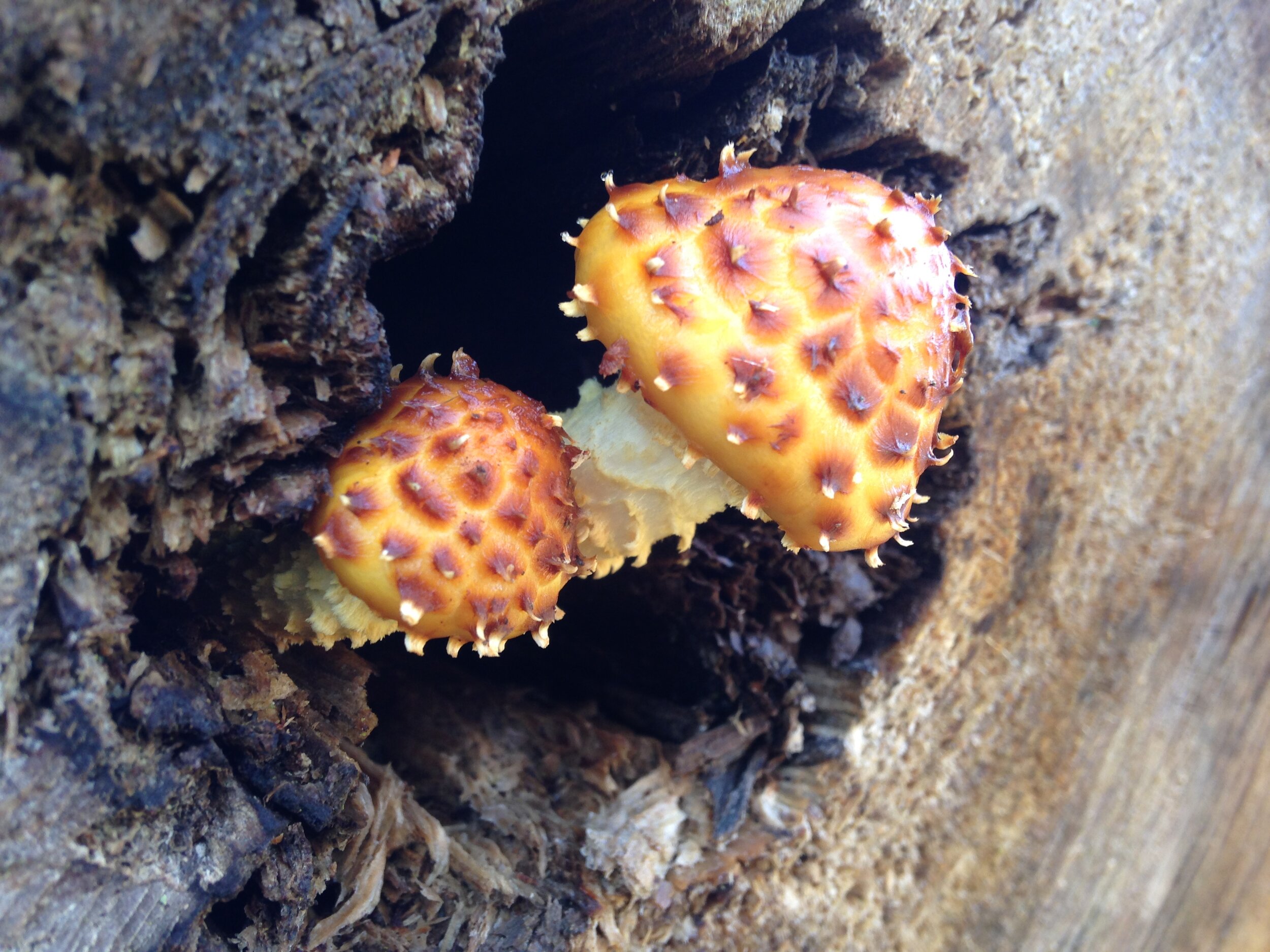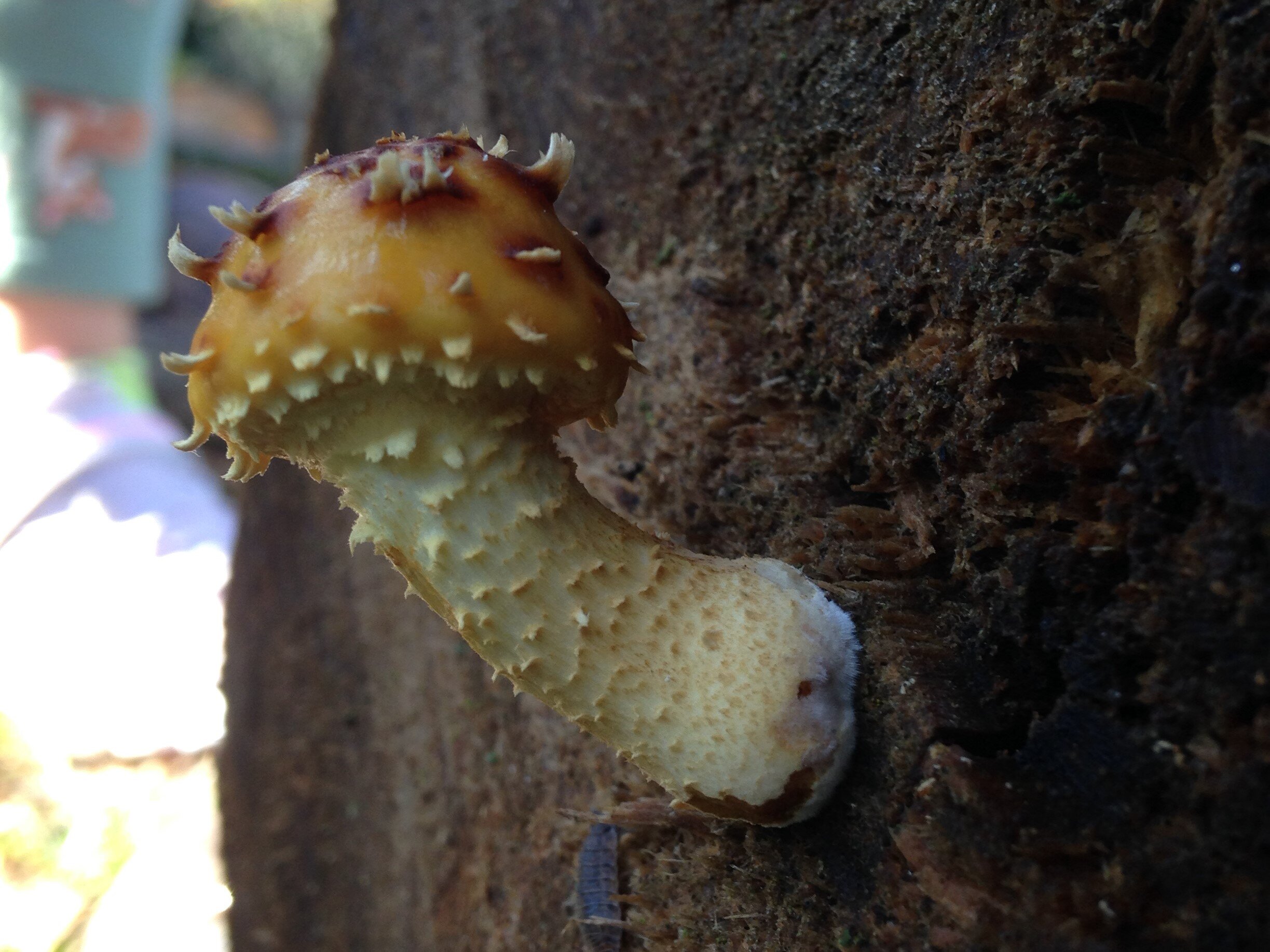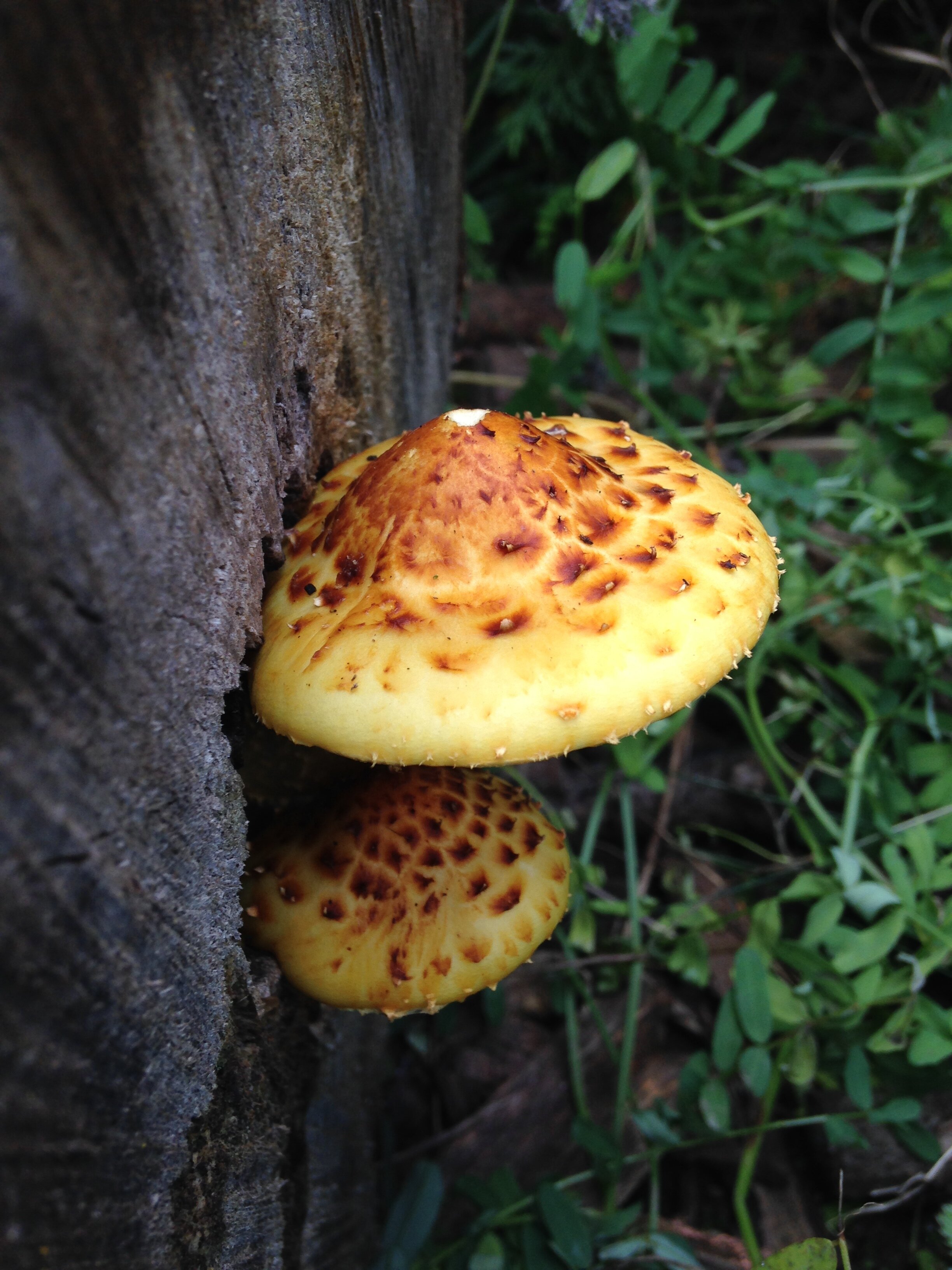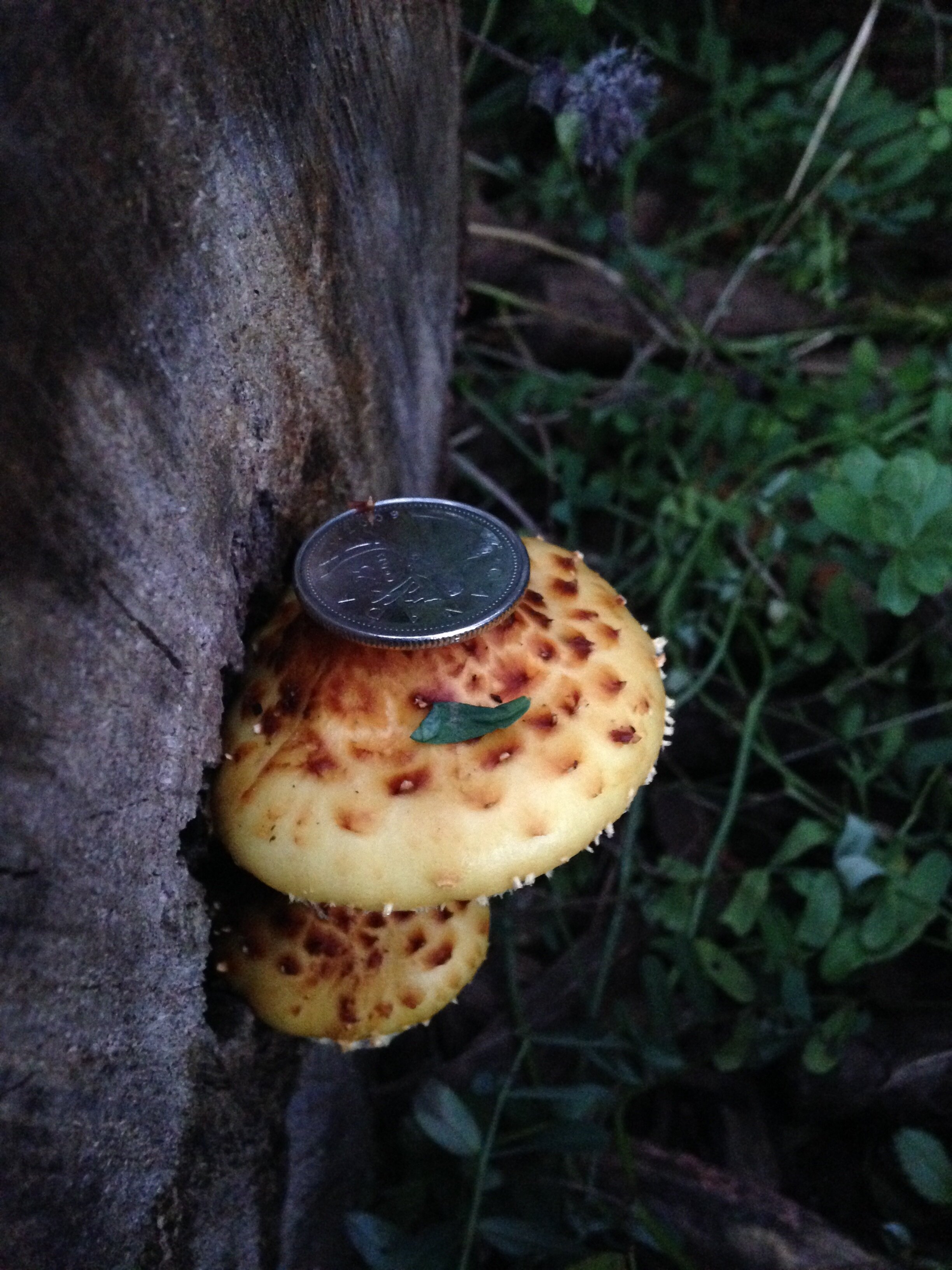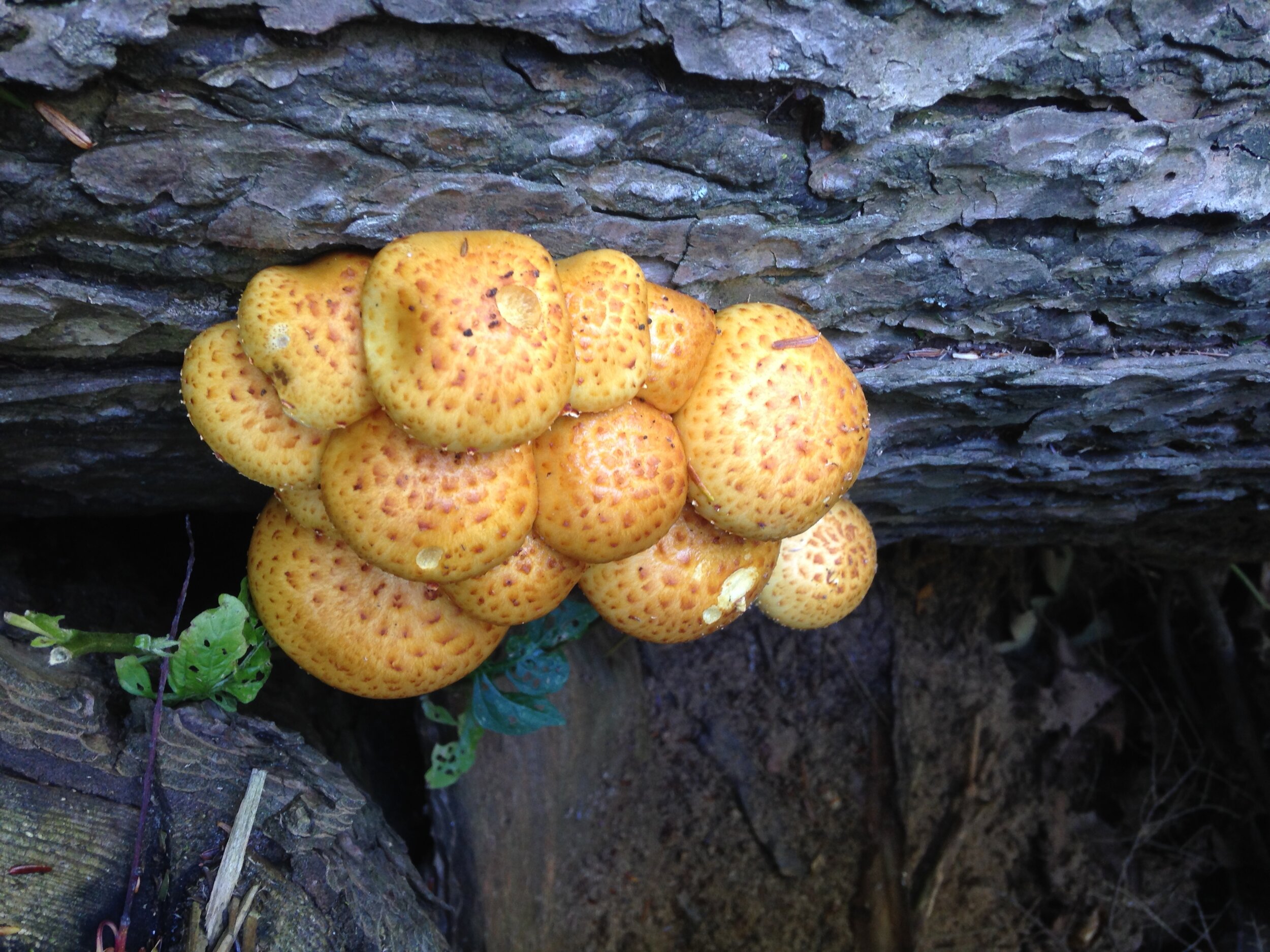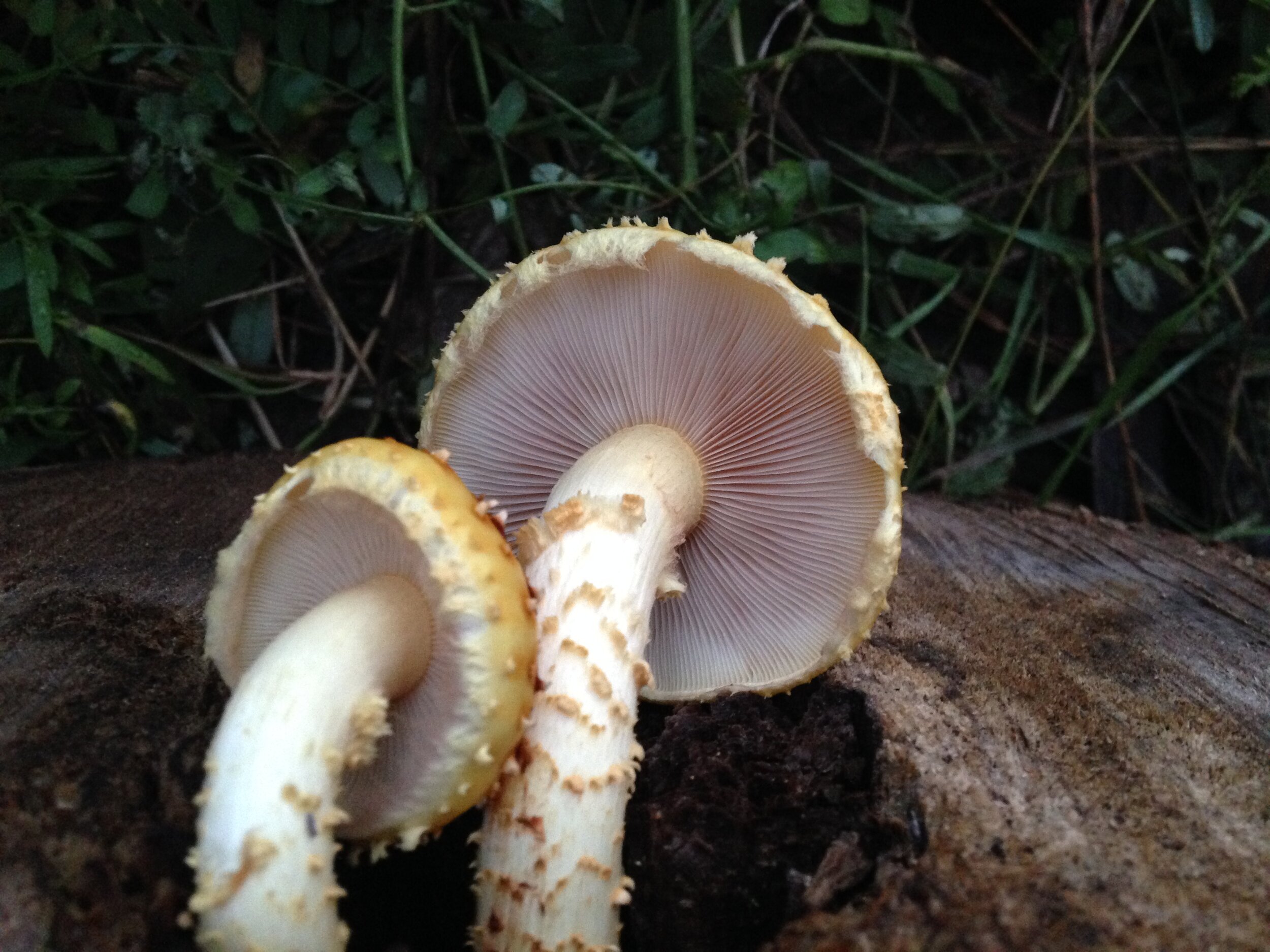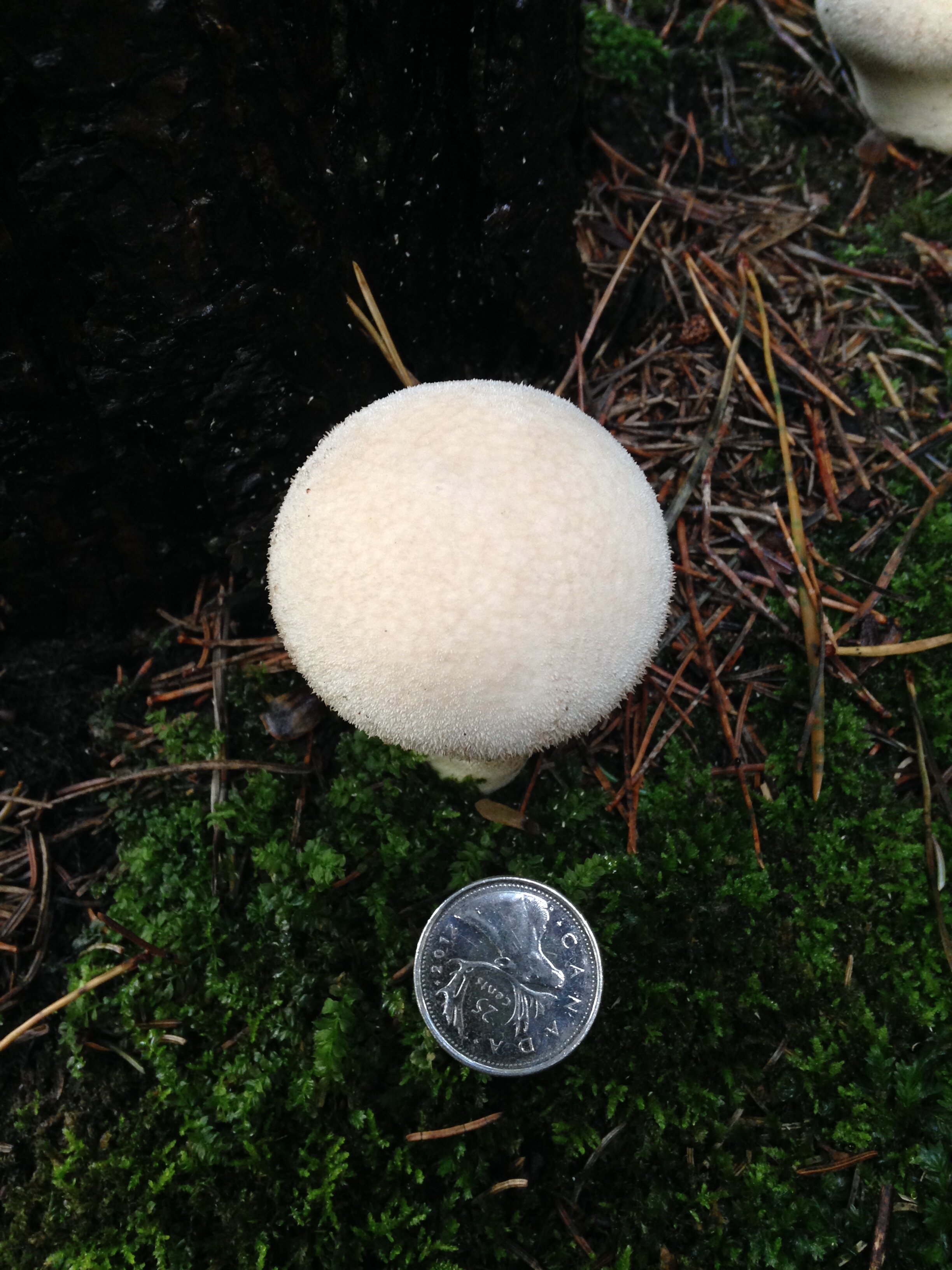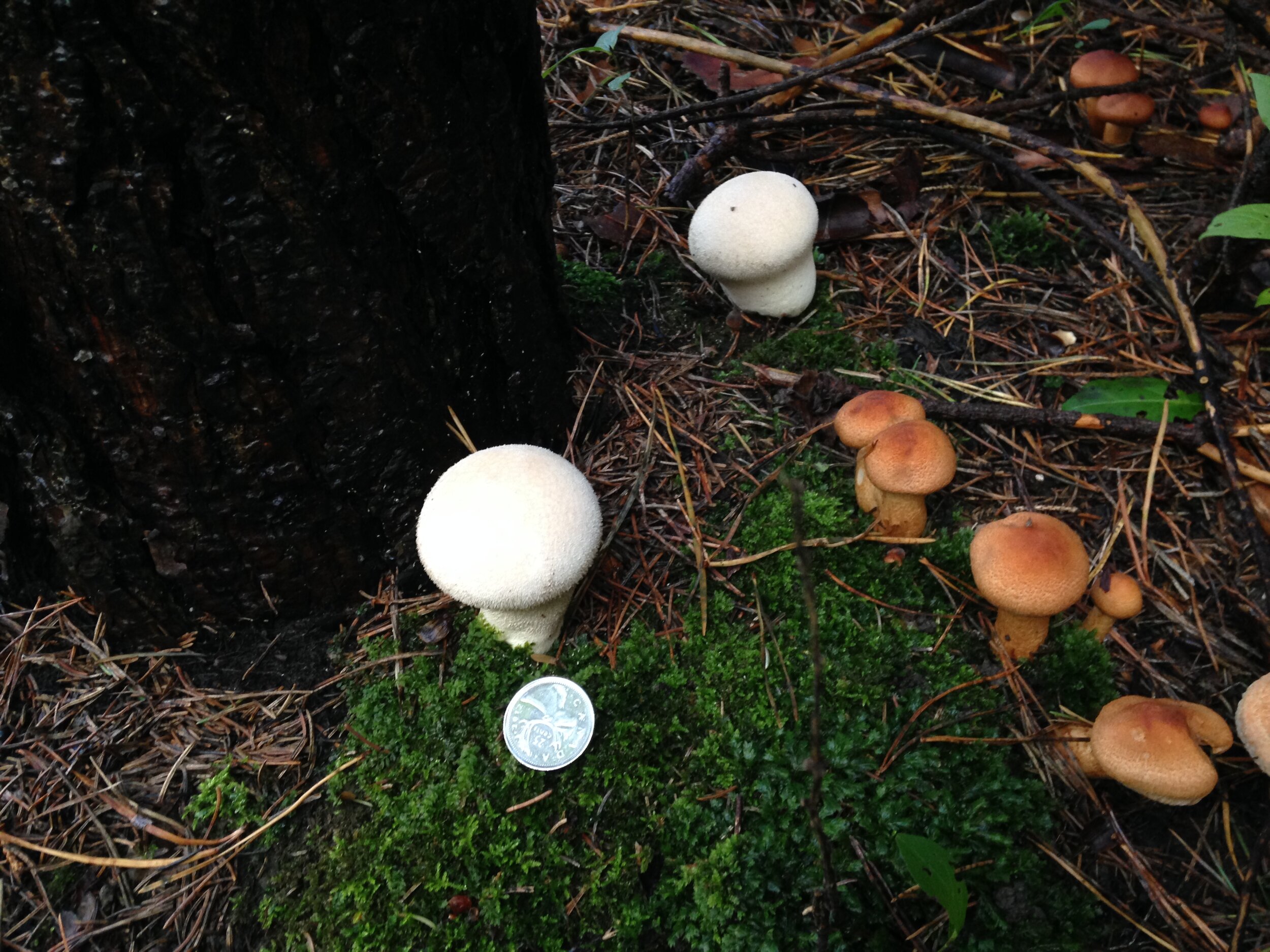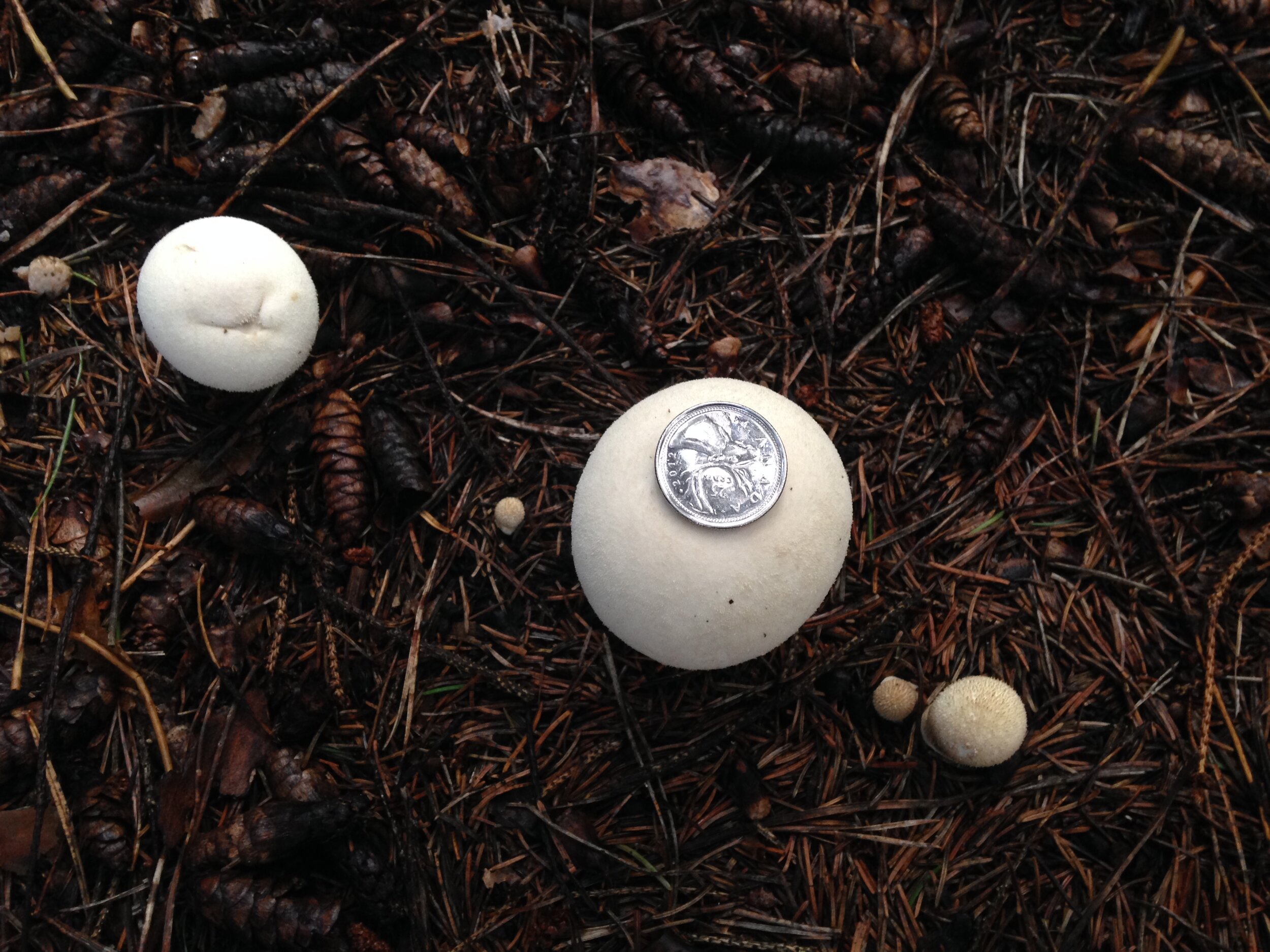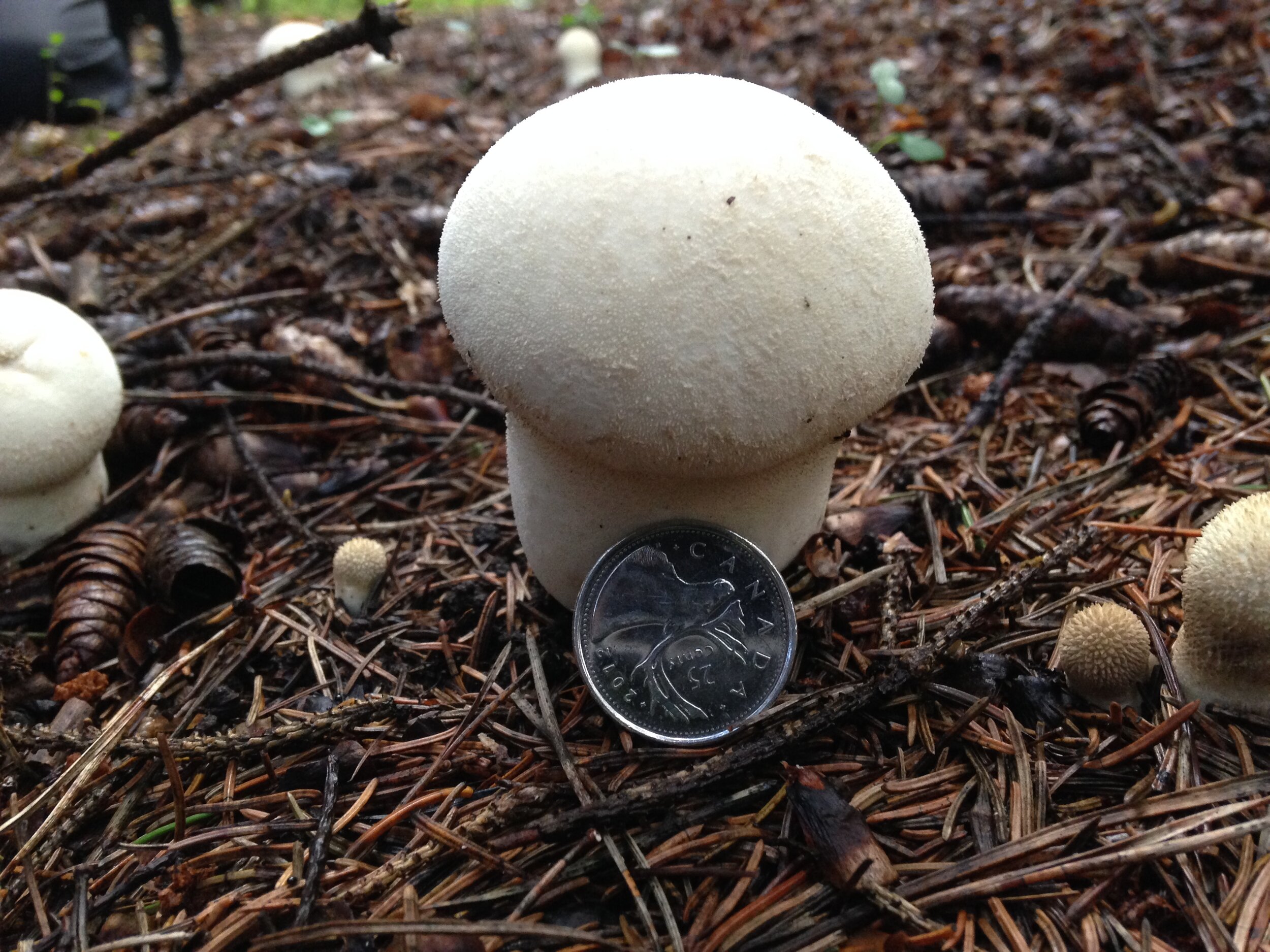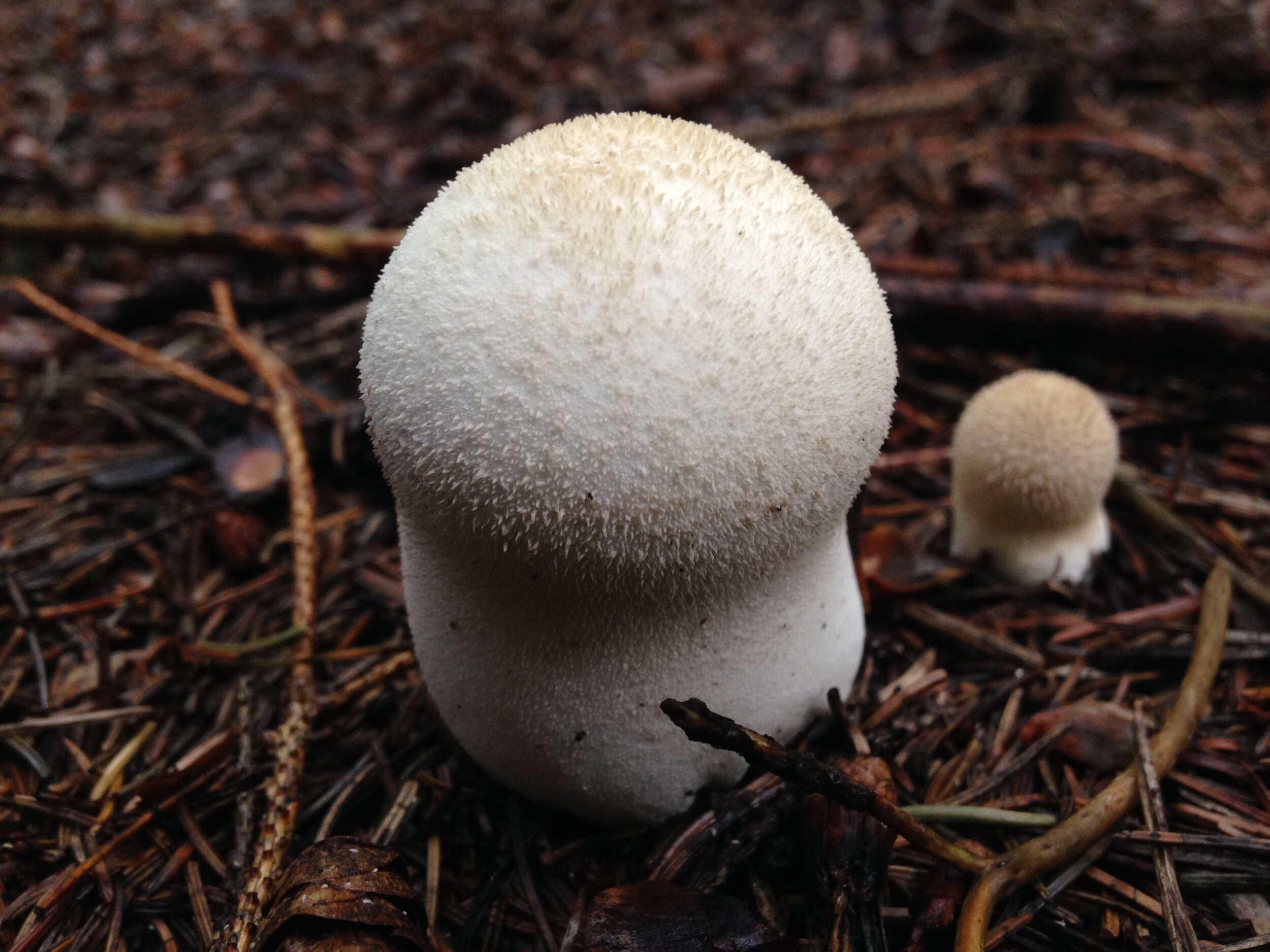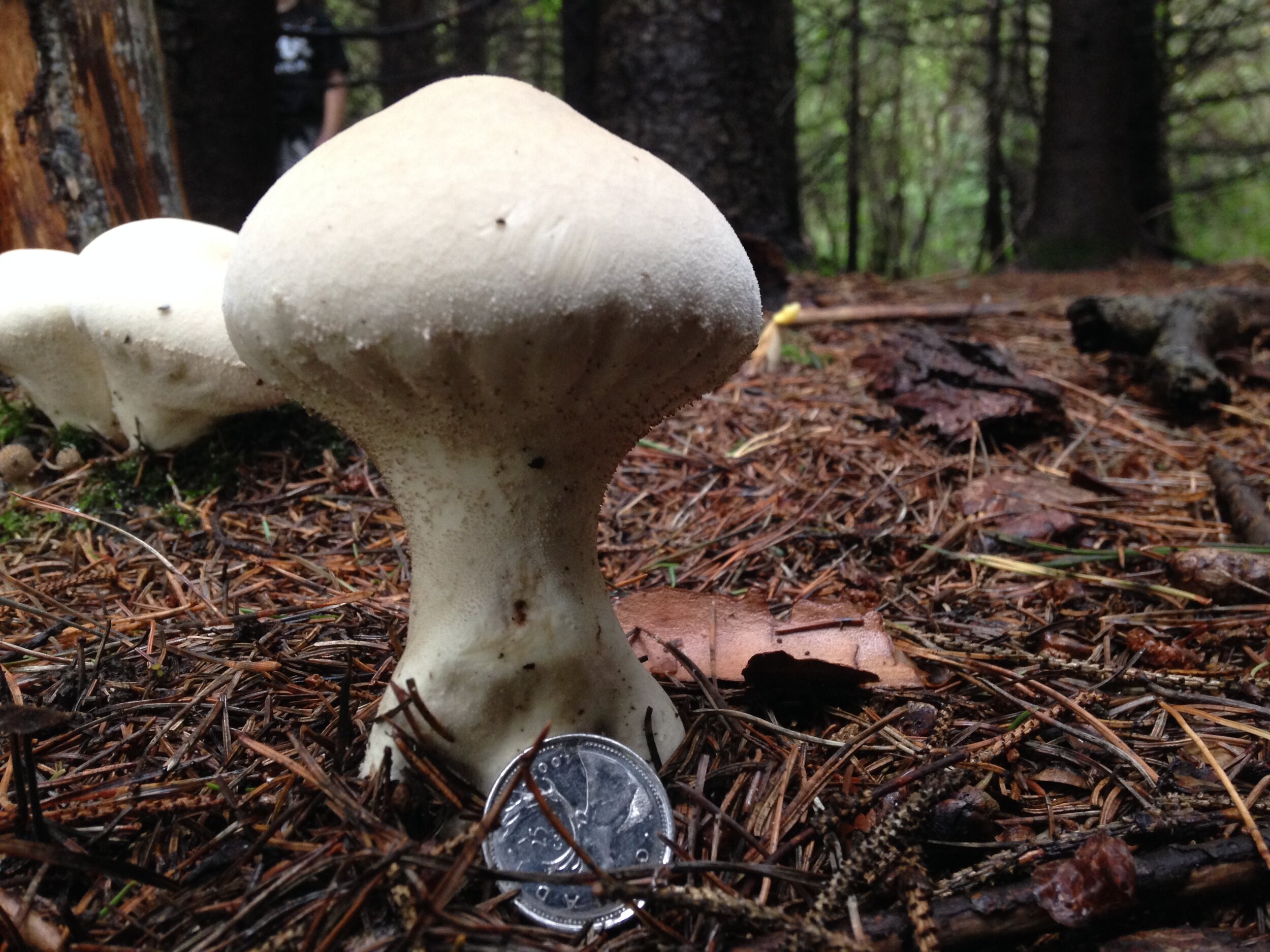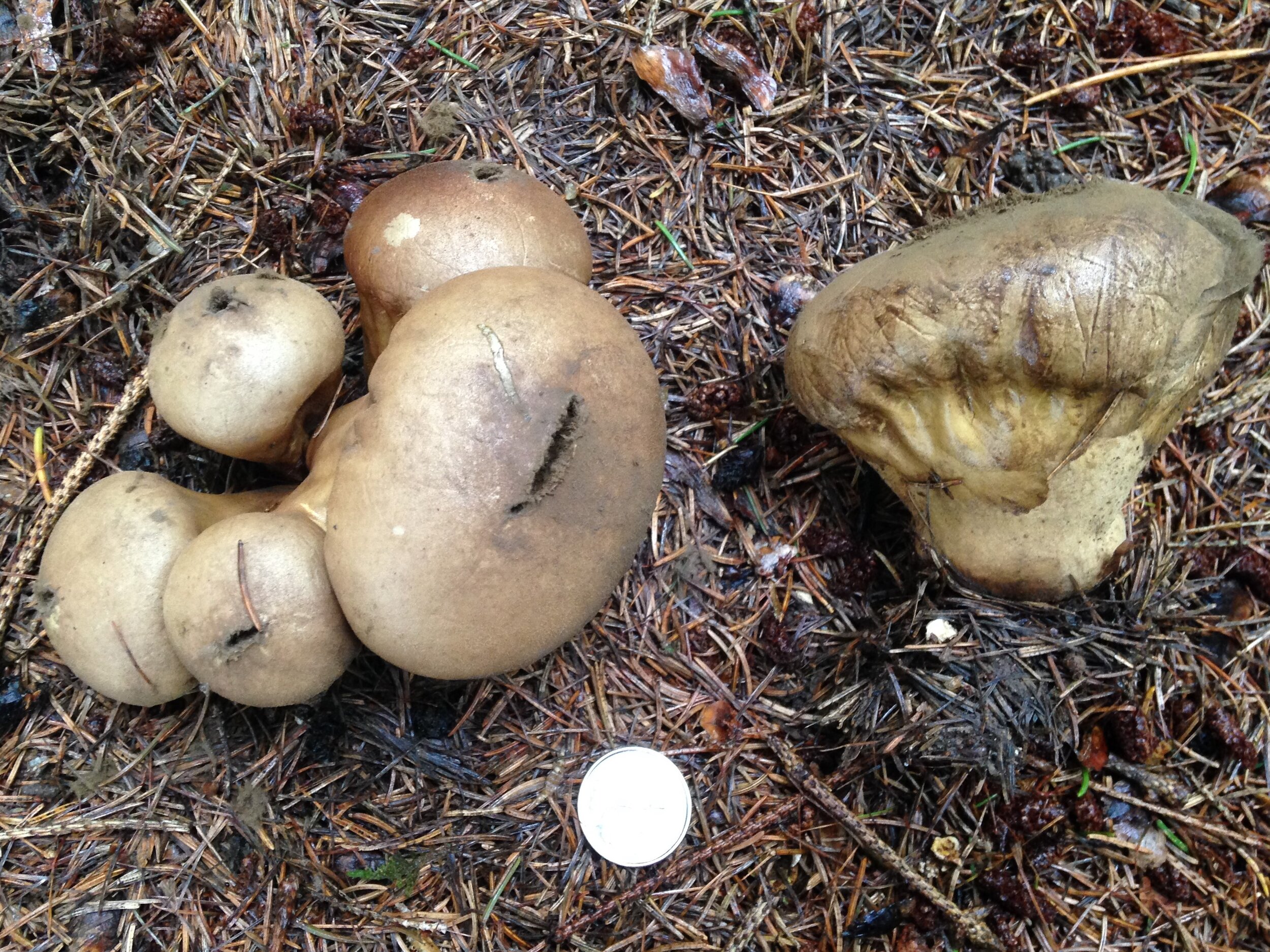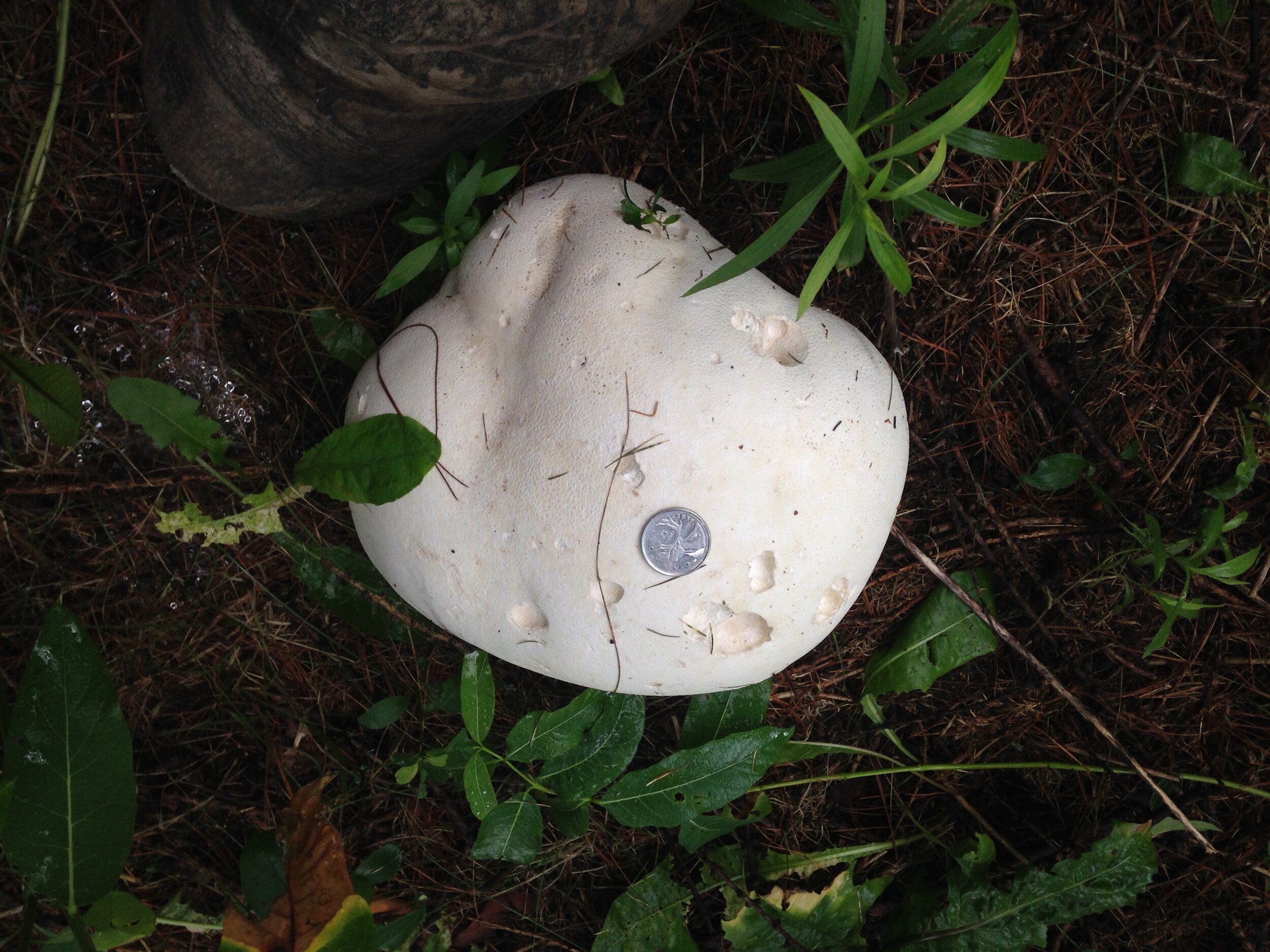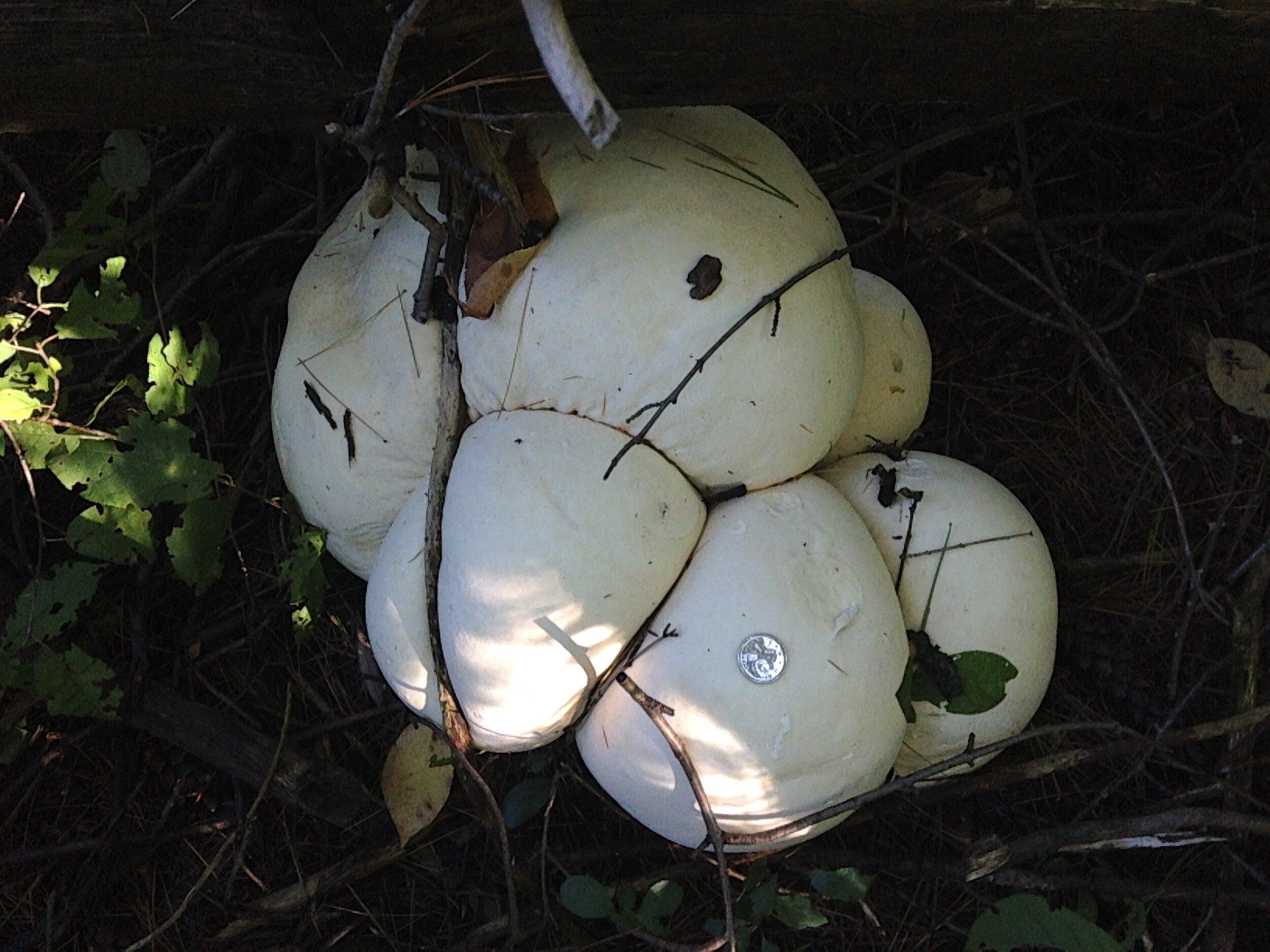The Season of Fungi pt. 2
Since it is the peak season for finding fungi, I had enough photos and enough interest that I decided to make another post detailing some of the species I have been finding.
I also want to note that there have been dozens of species which I cannot identify, which have totally stumped me. In no way am I a master mycologist or do I know a lot about fungi, but instead these posts are just my process of learning, and hopefully retaining the information. I want to include this little disclaimer because when folks write something about a species or kingdom they are learning about, sometimes it can seem like they know a lot. Really I know so little about anything on the land, and that is the impetus for this “to know the land” project; it is all about learning based in a desire to know more about the land base where I live. I really don’t know much at all.. but I am totally game to try and learn more. So here we go.
There are two very similar species within the genus Pholiota, P. squarrosa and P. squarrosoides, and if you know any botanical or scientific Greek, than you may recognize that the suffix -oid or -oides means “like” or “similar to” (eg. “humanoid” meaning “like or similar to human”). These species are so similar that some authors explain that the only way to tell them apart would be to use a microscope to look at the spore sizes (which are only differentiated by a couple of microns!). Other authors suggest that one of these species has a slimier cap while the other is dry, and to be honest, both of these individuals had kind of slimy caps. So, going with that I am going to say that this is likely Pholiota squarrosoides, which has no common name that I have found — and who would want one? It would just get even more confusing.
FIELD SIGNS (this will be pertaining to both P. squarrosa and P. squarrosoides. Descriptions will differentiate where necessary.)
Cap (of P. squarrosoides) is slimy when wet, and may get a little sticky as it dries.
Cap has visible scales. P. squarrosoides will have fewer scales than the P. squarrosa, but this may change as the cap matures.
P. squarrosa may have a phase where the gills have an olive-green tinge where the P. squarrosoides will not, but this is also only a phase which eventually P. squarrosa grows out of to end up again looking like the P. squarrosoides with whitish-rusty brown gills.
Grows in clumps on decaying hardwoods. I have found them on dead Maples.
August - October. I found the first individual September 28th, and the second October 1st.
ASSOCIATIONS
P. squarrosa and P. squarrosoides grow in deciduous forests on dead and decaying hardwoods. As mentioned above, I have found both individuals on Maple, one a sawed Sugar Maple log to be used for firewood, another an unknown Maple log which had fallen in a hardwood forest.
HUMAN USES
The funny thing is that P. squarrosa is poisonous but P. squarrosoides is not. With so much in common, I don’t know if I am in a place to feel confident in my identification that I would try and consume them.
Pestle-shaped Puffball, or Handkea excipuliformis is a puffball, which only means it looks like a ball, or a ball on a stalk in this case, when it is mature. Puffball is not a scientific classification, just a characteristic found across diverse genera and species. It helps to describe a species but does not imply relationship between Puffballs. H. excipuliformis used to be called Calvatia excipuliformis and also Lycoperdon excipuliforme (the ol’ “wolf-fart” genus again), which is the one I see commonly in my books.
FIELD SIGNS
Looks similarly to the Pear-shaped Puffball, Apioperdon pyriforme but Handkea excipuliformis can grow to be taller and grows from the ground, not rotting wood.
Spore mass is dark brown and released from pressure from drops of rain, passing animals, or those who are easily amused by squishing the mature puffball tops to watch the beautiful cloud of millions of spores released into the air. It looks like smoke the spores are so fine. Luckily you can keep squishing them and it’s fun for a while.
The puffy part on the top (spore case) is typically less than 8 cm wide and usually shorter than the stalk (sterile base). Sterile base very prominent and elongated (up to 12 cm long).
ASSOCIATIONS
H. excipuliformis grows singly or in groups under coniferous or deciduous trees. The ones from the photos above were in a Pine (Pinus spp.) plantation and were growing near the edge-ish.
HUMAN USES
H. excipuliformis is edible when young but again, looks like so many other puffballs of unknown edibility, and I imagine when young would look even more similar. Not trying to be fungiphobic, it’s just not as clear to me as a Giant Puffball (Calvatia gigantea) or a Shaggy Mane (Coprinus comatus).
Many mycological newbs are first drawn in to the wonder of mushrooms by the strange and beautiful colours and shapes that this kingdom provides. I was also sucked in by the freakin’ huge size of a possible free meal. Giant Puffball or Calvatia gigantea is that — a rather large edible fungi that is very common and unmistakable. One of it’s other common names I just learned about recently is “Moon melon”. You can’t ask for a better teaching mushroom.
FIELD SIGNS
It’s big. One of the books I have shows a photo of a toddler beside C. gigantea for scale, and the Puffball is the same size! Of course they can start out small, but if you aren’t sure, go check it out the next day. I have measured an individual day after day and it has a rate of growth on good days of about 2-4 cm a day, in all directions.
No gills, just a big roundish stony looking white thing on the ground. It looks like someone lost one of those white dodgeballs from gym class.
Sometimes there are multiple orbs growing beside/attached to each other and they seem to get huge too.
All white flesh inside when young, but as they ripen the insides go yellow, and then brown, and then fibrous and sporey. That’s when you get to smash them about with sticks to spread the spores.
No stalk like the Pestle-shaped Puffball. When you remove C. gigantea from where they grow you can find a small ridged area at the bottom which could be reminiscent of a belly button.
ASSOCIATIONS
Fruits on the ground in coniferous and deciduous forests, sometimes alone, often with others near by. I have recently seen my first Giant Puffball fairy ring which extended beyond what was observable from one spot. I had to walk through the woods to see all of the individuals in the ring.
HUMAN USES
C. gigantea is edible when still young but overtime the insides begin to get that yellow hue, and it is too late by then. But if you do find one that is ready to be eaten and you feel like it, bring it home! I would suggest peeling the puffball and then slicing into steaks or chunks and dressing them as you like. I have eaten them as a replacement for tofu in sandwiches, or fried with onions, and in chilies. I don’t tend to eat them much any more as they don’t have too much flavour, but they are a good introduction to edible wild mushrooms.
Another human use is fun. Fun to spread the spores around. Just put on a mask or bandana and try not to inhale the spores. It can cause some respiratory distress.
To learn more :
Season of Fungi pt. 1
Season of Fungi pt. 3

